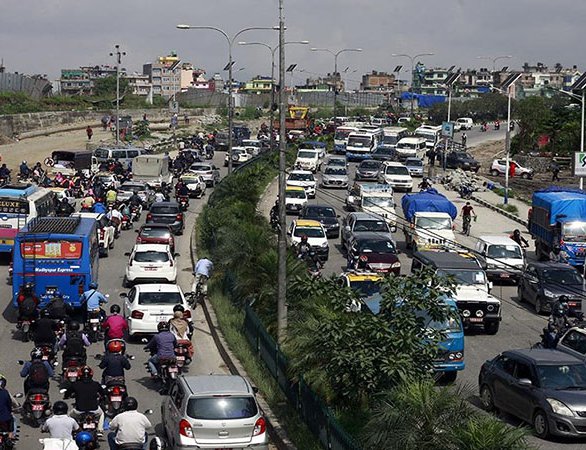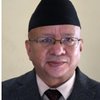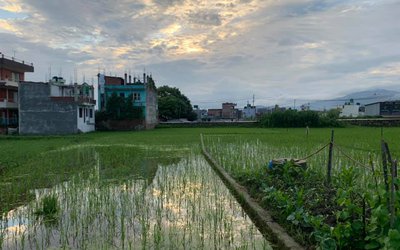
The problem of traffic jams around the world is now taking a terrible turn. Not only developing countries but also the people of developed countries are facing problems due to traffic jams.
Traffic jams have become a headache for everyone from New Road in Nepal to New York in the United States. Failure to reach the destination on time is the main problem caused by traffic jams. Due to the traffic jam, the passengers are also suffering from great mental stress which cannot be accounted for. It is no exaggeration to say that where there is a problem, there are also solutions.
Why is the traffic jam in Kathmandu notorious?
Despite the lack of effective traffic management measures in the Kathmandu Valley, traffic congestion has increased. Why is the traffic jam in Kathmandu notorious? The number of vehicles plying on the roads of Kathmandu Valley is continuously increasing and the length of the road is also the same.
Increasing traffic jams are a common problem for everyone living in Kathmandu. There are millions of victims of traffic jams in the valley every day. People from all walks of life are affected by the long, tiring and suffocating traffic jams in Kathmandu. Wherever you go, large numbers of vehicles are greeted by standing in line, making it difficult for pedestrians to cross the road. In Kathmandu, if you need to reach the nearest place on time by using public transport, it is advisable to get out 45 minutes earlier than your usual schedule. Limited road space
The number of vehicles plying on the roads of Kathmandu Valley is continuously increasing and the length of the road is also the same. According to the report of the Metropolitan Traffic Police, if all the vehicle lines in the Kathmandu Valley are connected, the line will be longer than the total length of the roads in the Kathmandu Valley. According to the department's report, the total length of the road is 4.5 million feet and the single queue of all vehicles in the Kathmandu Valley will reach 7.2 million feet.The number of vehicles registered in Bagmati Zone is 921,917 motorcycles, 12,616 buses 1343 microbuses 22,3222 trucks and tippers 10654 cranes and excavators 154443 cars and jeeps 2525 tempo.
Middle and upper middle class people prefer to drive their own vehicles due to lack of public confidence in public transport, erratic behavior of drivers and co-drivers, overcrowding and long stops in various places. Another major reason why large numbers of people choose to own means of transportation is because public transport is not easy to navigate - they are crowded and suffocating.
According to the report of the traffic police, only 6 percent of the big and convenient public buses like public transport are in operation in the Kathmandu Valley. According to the Division, 17 million vehicles are registered in Bagmati Zone.
Many sections of the valley have no pedestrian walkways. When there are no sidewalks, people are forced to walk on the roads risking their lives. Adding to the difficulty for pedestrians, sidewalks in major places in the valley are occupied by street vendors during office hours, forcing pedestrians to walk on the road.
If all the traffic lights in the valley work, it is enough to mobilize half the manpower. Officials say that if all the traffic lights are in good condition, the traffic jam in the valley will be reduced by more than 40 percent. Also, Gwarkos’scrossing , including Koteshor, are always popular for "anytime of the day" traffic jams.
The flyover at the crossing, which is an eight-lane road, does seem to have a serious defect in the design and construction itself. Growing population is a major factor in causing these unbearable traffic jams.
The increasing number of vehicles on the road is directly related to the increase in the number of population. Therefore, it is clear that public and private vehicles are plying on the roads of Kathmandu beyond their capacity.
According to a report made public by the Metropolitan Traffic Police Office, 17 million vehicles have been registered in the Bagmati Zone alone. The number of passengers in the vehicle is very high. But because the roads are so narrow, motorcyclists line up on the sidewalk, which prevents people from walking.
Although the government is making every effort to prevent long traffic jams by widening the roads, all the efforts have not been successful. The 800-meter-long underpass constructed in Kalanki with the help of China has become a tiebreaker to remove the long traffic jam at the main entry point of Kathmandu Valley.
Kathmandu's population growth will not stop here, traffic jams should be stopped anyway. Apart from traffic jams, another concern of many Kathmanduites is increasing pollution. Today the various vehicles we drive run on diesel and petrol. They damage the environment through their high carbon emissions. Therefore, first of all, the government needs to promote electric vehicles as an alternative to fuel-powered vehicles.
Currently, the trend of using electric vehicles is slowly increasing but the big target has not reached the population. Reducing the number of private vehicles, especially motorcycles and scooters, will help control traffic jams. If appropriate measures are taken, we can travel freely in the future. And maybe there is a history of traffic jam in Kathmandu!
Petrol and diesel are very expensive commodities in Nepal, we must use them responsibly. Some people are thinking about road safety. But mobility is in high demand. So we can't restrict mobility and for that we can go for mass vehicles.
Yes the answer is improved public transport and the use of high means of transportation. For example providing microbuses or other similar vehicles at fixed points and routes as office transport for employees and providing fewer cars with tracking system to higher authorities required for maximum use. This will reduce the number of cars / vehicles off the road. We definitely need to upgrade public transport, they are far from being safe and attractive. There are a lot of incidents every day, especially among the elderly and children. These incidents are neither reported and / or recorded, so there are fewer accident statistics.
The officials have been widening the road to solve the traffic jam. But, this is not the solution. Instead, it involves more traffic problems. This mentality is a big obstacle. Another problem is that we have limited the transportation system to the management of vehicles.
On the basis of that, the government and NEA are constructing infrastructures like roads and traffic lights. Although an eight-lane roundabout has been built for all vehicles, there are no lanes for bicycles and no sidewalks for pedestrians.
Vehicles are just a means to an end, not a means to an end. For this, the system needs to be planned by analyzing the transport needs of the people. Most people in Kathmandu travel average less than five kilometers. What kind of infrastructure is needed for this? And, overall, the transportation system needs to be made sustainable.
Everybody has noticed that the road is getting narrower with the addition of new vehicles every year. We have not been able to solve the problem of narrow roads as we cannot even imagine the only road that is wide and there are no other alternatives like (overhead) flyover and underground route system.
It is to be hoped that relief will be provided if lessons can be learned from many countries and cities that are going through a similar situation.
Many European countries have faced similar problems before us. But effective policies and their implementation have largely eliminated the problem of traffic jams in those countries. Today, control of wide roads and increasing number of private vehicles seems to be a priority to control traffic jams around the world. In today's world, construction of roads as well as better development of public transport and increasing its capacity are considered as suitable means for traffic management.
In developed countries, when there is a good system of transportation, the traffic problem seems to be solved.
The first priority of every elected representative is the development of transportation. However, the development of this sector has not been as it should be. The increase in the number of vehicles is more than 205 percent annually. In that proportion neither the road network is developed nor the management is improved.
The development of a nation is measured by the development of roads and transportation. As soon as development is mentioned, the image of roads and transport comes to the minds of the people.
Roads and transportation are an important link in strengthening the economy. Transport promotes social and national and international trade. Transport has a huge impact on the economy.
Suggestions:
To develop mass transport system and run trains in cities with a population of more than 3 million. To manage qualified and experienced transport administration. To determine the bus park and bus schedule. Emphasis on transportation operation in line with the concept of electric / alternative energy. Emphasize on developing bicycle network, construction of footpaths. To manage sky bridges, zebra crossings, traffic lights, etc. as required. To end the syndicate in transport.To operate public transport as per the Companies Act.
Furthermore, to implement and improve labor law in the transport sector.To guarantee employment, professional development and social security of transport workers. Rickshaws, carts and tractors will not be allowed on the highway. To operate taxis only through institutional and company.To make the helmet of the motorcycle passenger according to the national standard. Arrangements will be made for the passengers riding on the back of the motorcycle to wear helmets. To formulate and implement national standards of roads.To operate quality driving school.To determine suitable road for large vehicles including trippers and to allow them to run only on schedule.
Moreover, to form national and state level road safety boards. Make school and campus vehicle free zone as much as possible. To develop at least one Autoland in each municipality.Planning according to the concept of smart city.To manage the construction work and construction materials. To implement, amend and modify the existing laws and regulations related to transportation.
Older vehicles are increasing not only traffic jams but also pollution. Recently, micro, tempo, small buses and small vehicles with low passenger capacity have increased in Nepal. In the capital, it has become necessary to run a bus carrying a large number of passengers instead of public transport carrying small and small passengers. School Bus Management - Years ago, many people in London (including other countries) in the UK were surprised and stunned that school buses could be easily managed by regulating them. It has been proven in a few years that this can be done.
According to the student's address, they were admitted to a nearby school, so most students did not have to use transportation. This did not only solve the problem of traffic jam but also found equality in education. The locals also started paying special attention to the quality of the schools run around them.
At present, 3,000 schools are in operation in the Kathmandu Valley and about 800,000 students are studying in them. Of these, 200,000 use school vehicles. A total of 6,000 buses make 2 to 6 trips a day and 30,000 trips are made. Even after spending 2 hours on an annual trip, 50,000 to 70,000 hours of buses are running on the road daily. Young children traveling in it are forced to spend their time studying, playing and entertaining and get stuck in unnecessary traffic jams on the way.
When the school is managed at the local level, the bus ride will end. On the one hand, parents are waiting for their children at home, on the other hand, there will be a tradition of suffering in traffic jams on the way.
In addition to saving money, children can save time and engage in other fruitful activities. Express (Expressway) - Passengers who are currently having difficulty in reaching their destination by stopping for hours by boarding public transport, when imagining to be able to travel on the expressway without any hindrance, ask themselves - is such a facility possible in Kathmandu? Do we have the capacity to spend a lot of money? This can be accompanied by curiosity. When will Kathmandu run like Metro in New Delhi, India? Is it possible to expect lane discipline in Nepal like in Europe and America? Is our financial burden possible when looking for alternatives to the existing routes? The answer to these questions is simple: "It's not possible without spending a penny, but there are plenty of options that can be solved with a small investment." When you reach your destination faster by public buses, the pressure of personal transportation automatically decreases. People will also use the expressway on a daily basis to buy vehicles, using their vehicles only at certain times. This will also help reduce traffic jams.
The answer to these questions is simple: "It's not possible without spending a penny, but there are plenty of options that can be solved with a small investment." When you reach your destination faster by public buses, the pressure of personal transportation automatically decreases.
People will also use the expressway on a daily basis to buy vehicles, using their vehicles only at certain times. This will also help reduce traffic jams. Inadequate and unorganized parking system in the valley, there is no organized parking lot and hundreds of public and private vehicles are parked on the side of the road every day.
The government has been talking for a long time about construction of underpass in New Baneshwor and flyover in Maitighar-Thapathali section but it has not been implemented. The traffic police claim that the traffic jam in the area has been reduced by 80 percent after the opening of the country's first 800-meter underpass in Kalanki.
- Susan's “U-Turn” From Atheism To Spirituality And Superstition: Some Considerations
- Jun 29, 2025
- Former Ambassador To People’s Republic Of China Acharya's 'Diplomatic Diary': A Collection Of "Autobiography " Including Diplomacy
- Jun 17, 2025
- Banker And Businessman Being The Same Person: How Practical, How Impractical
- Jun 01, 2025
- 2082/83 Policy And Program: Presentation New, Short But Not Exciting
- May 07, 2025
- Nepal's Capital Market: Some Analysis
- May 02, 2025













